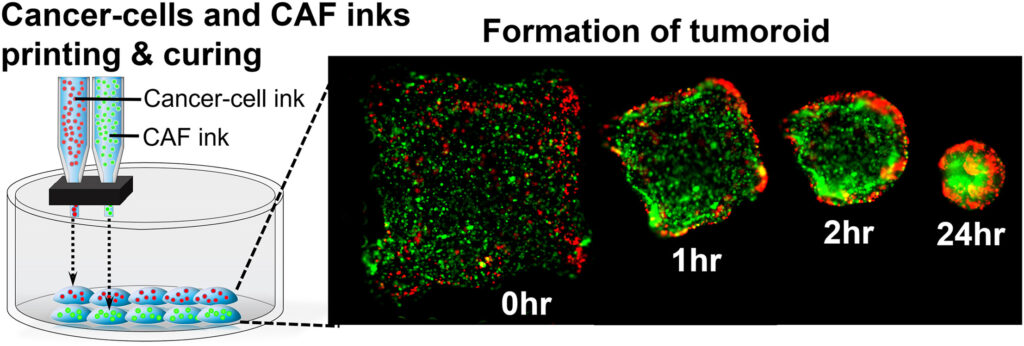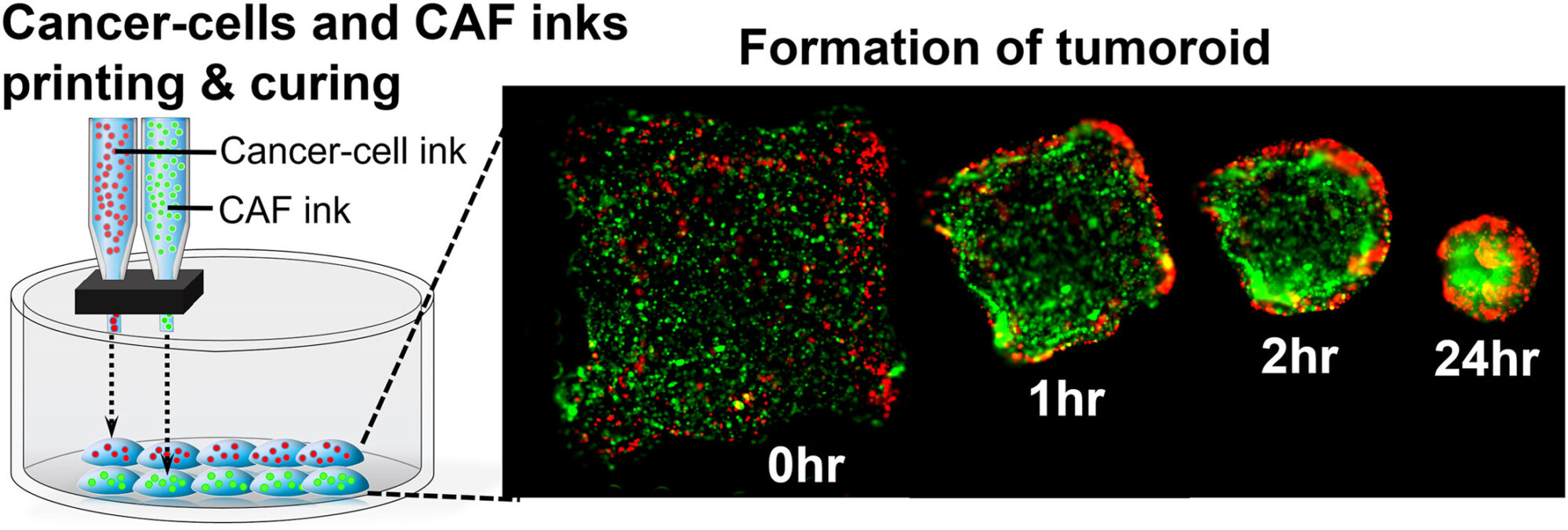Cih’s paper on inkjet printing of tumoroids with tumor-stroma interface is published on the Journal Materials Today Advances. In this work, Cih developed a new 3D printing method, named as “morphogenetic printing”, to rapidly produce tumoroids with extremely high cell density.

Inkjet-printed morphogenesis of tumor-stroma interface using bi-cellular bioinks of collagen-poly(N-isopropyl acrylamide-co-methyl methacrylate) mixture
Abstract
Recent advances in biomaterials and 3D printing/culture methods enable various tissue-engineered tumor models. However, it is still challenging to achieve native tumor-like characteristics due to lower cell density than native tissues and prolonged culture duration for maturation. Here, we report a new method to create tumoroids with a mechanically active tumor-stroma interface at extremely high cell density. This method, named “inkjet-printed morphogenesis” (iPM) of the tumor-stroma interface, is based on a hypothesis that cellular contractile force can significantly remodel the cell-laden polymer matrix to form densely-packed tissue-like constructs. Thus, differential cell-derived compaction of tumor cells and cancer-associated fibroblasts (CAFs) can be used to build a mechanically active tumor-stroma interface. In this methods, two kinds of bioinks are prepared, in which tumor cells and CAFs are suspended respectively in the mixture of collagen and poly (N-isopropyl acrylamide-co-methyl methacrylate) solution. These two cellular inks are inkjet-printed in multi-line or multi-layer patterns. As a result of cell-derived compaction, the resulting structure forms tumoroids with mechanically active tumor-stroma interface at extremely high cell density. We further test our working hypothesis that the morphogenesis can be controlled by manipulating the force balance between cellular contractile force and matrix stiffness. Furthermore, this new concept of “morphogenetic printing” is demonstrated to create more complex structures beyond current 3D bioprinting techniques.
